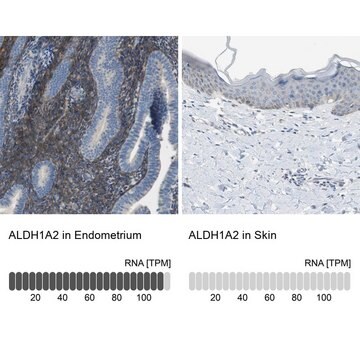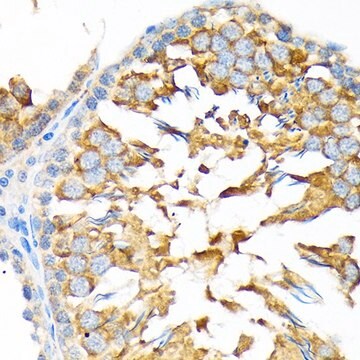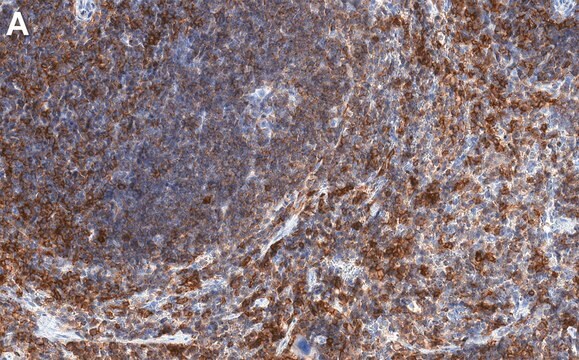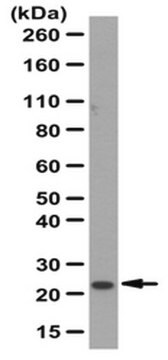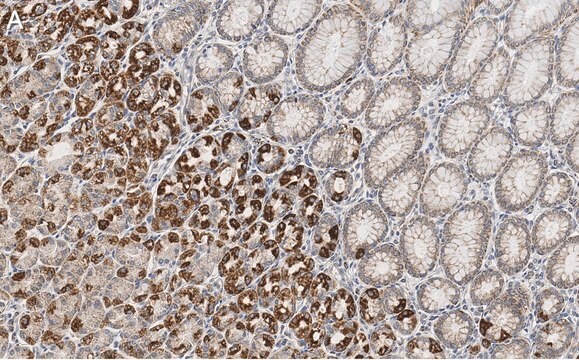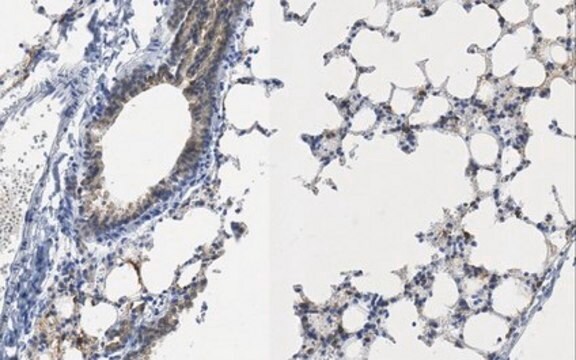ABN420
Anti-RalDH2 (ALDH1A2)
from rabbit, purified by affinity chromatography
Sinónimos:
Retinal dehydrogenase 2, Aldehyde dehydrogenase family 1 member A2, RALDH 2, RalDH2, RALDH(II), Retinaldehyde-specific dehydrogenase type 2
About This Item
Productos recomendados
origen biológico
rabbit
Nivel de calidad
forma del anticuerpo
affinity isolated antibody
tipo de anticuerpo
primary antibodies
clon
polyclonal
purificado por
affinity chromatography
reactividad de especies
rat, human, mouse
reactividad de especies (predicha por homología)
canine (based on 100% sequence homology)
técnicas
immunofluorescence: suitable
immunohistochemistry: suitable (paraffin)
western blot: suitable
Nº de acceso NCBI
Nº de acceso UniProt
Condiciones de envío
ambient
modificación del objetivo postraduccional
unmodified
Información sobre el gen
human ... ALDH1A2(8854)
mouse ... Aldh1A2(19378)
Descripción general
Especificidad
Inmunógeno
Aplicación
Immunofluorescence Analysis: A 1:300 dilution from a representative lot immunostained the developing eye in paraffin-embedded embryonic E15 Sprague Dawley (SD) rat head sections by fluorescent immunohistochemistry (Courtesy of Anna Ashton, University of Aberdeen).
Western Blotting Analysis: A 1:3,000 dilution from a representative lot detected RalDH2 in 50 µg of new born (postnatal P0) Sprague Dawley (SD) rat whole eye tissue lysate, but not in adult SD rat brain lateral cortex and pons tissue lysates (Courtesy of Anna Ashton, University of Aberdeen).
Neuroscience
Calidad
Immunohistochemistry Analysis: A 1:250 dilution of this antibody detected RalDH2 in mouse retina tissue section.
Descripción de destino
Forma física
Almacenamiento y estabilidad
Otras notas
Cláusula de descargo de responsabilidad
¿No encuentra el producto adecuado?
Pruebe nuestro Herramienta de selección de productos.
Código de clase de almacenamiento
12 - Non Combustible Liquids
Clase de riesgo para el agua (WGK)
WGK 1
Punto de inflamabilidad (°F)
Not applicable
Punto de inflamabilidad (°C)
Not applicable
Certificados de análisis (COA)
Busque Certificados de análisis (COA) introduciendo el número de lote del producto. Los números de lote se encuentran en la etiqueta del producto después de las palabras «Lot» o «Batch»
¿Ya tiene este producto?
Encuentre la documentación para los productos que ha comprado recientemente en la Biblioteca de documentos.
Nuestro equipo de científicos tiene experiencia en todas las áreas de investigación: Ciencias de la vida, Ciencia de los materiales, Síntesis química, Cromatografía, Analítica y muchas otras.
Póngase en contacto con el Servicio técnico